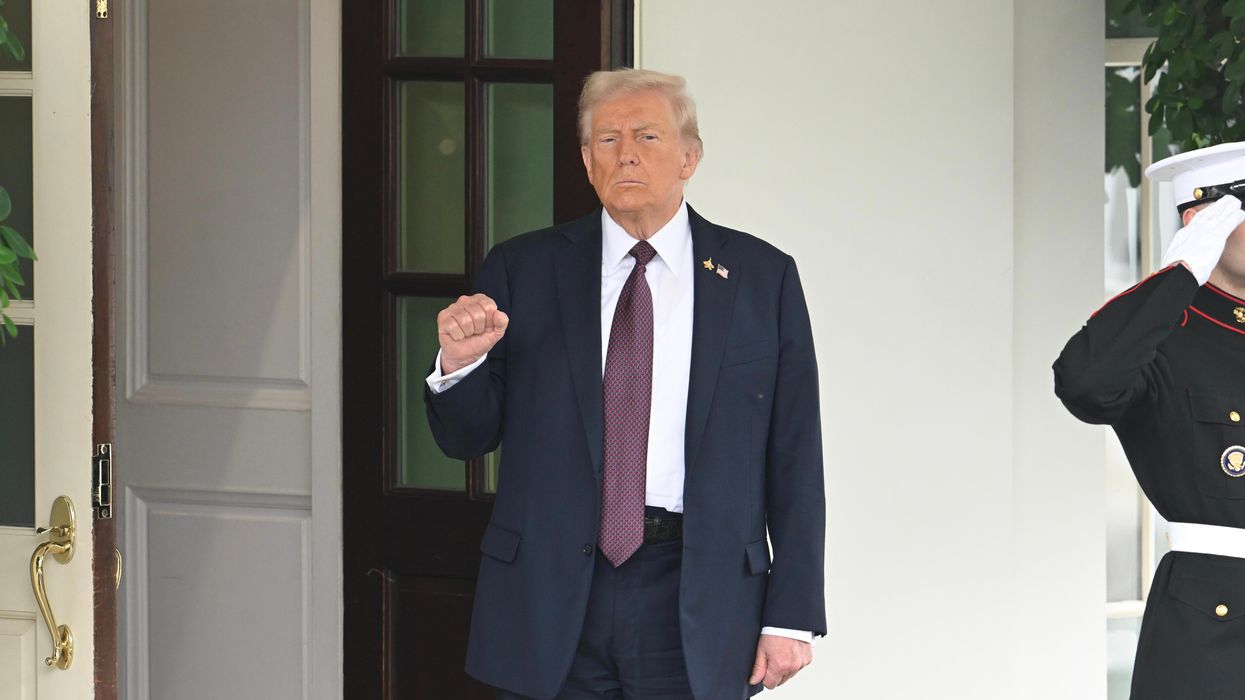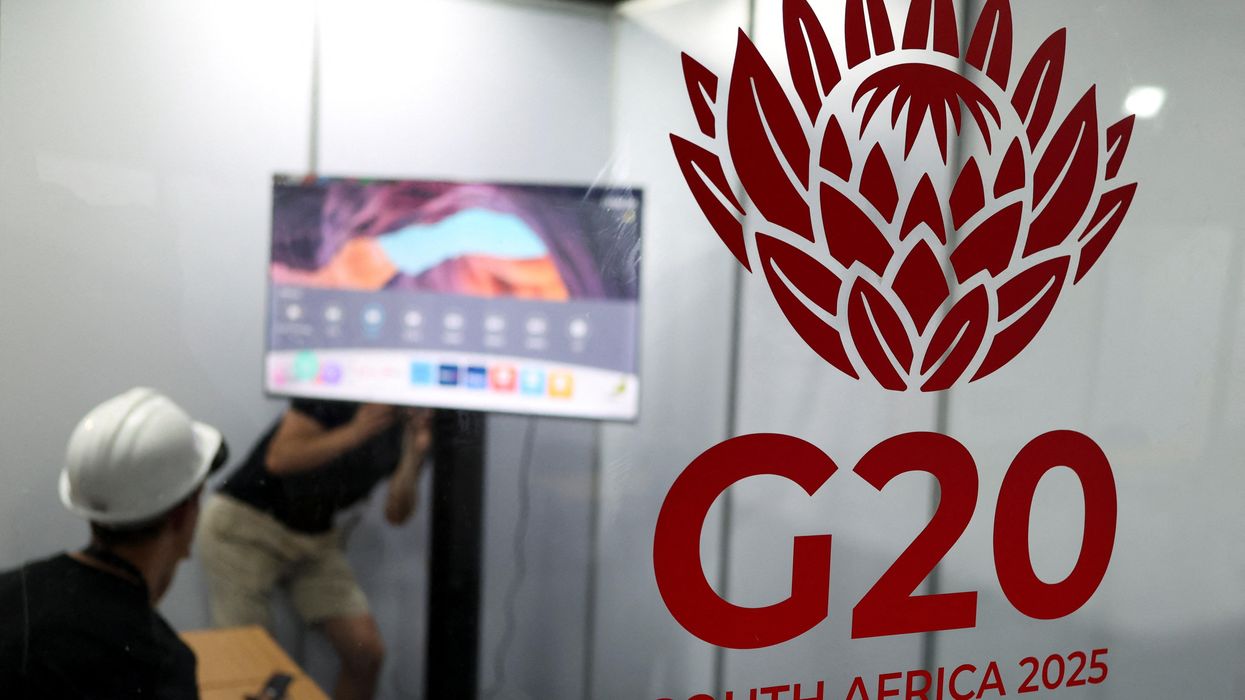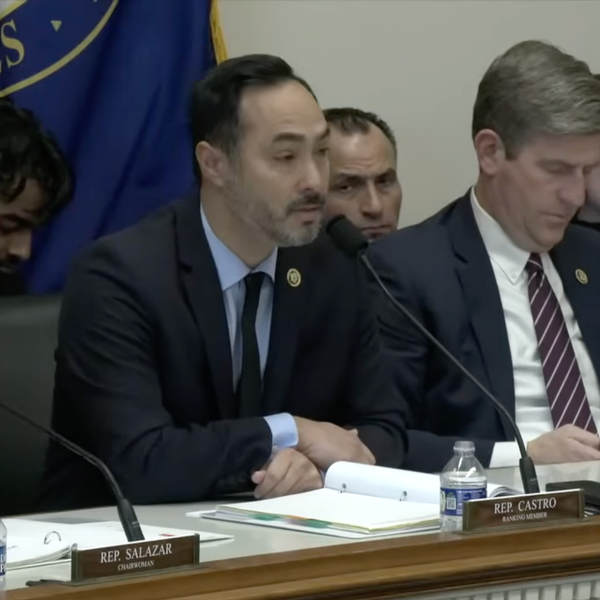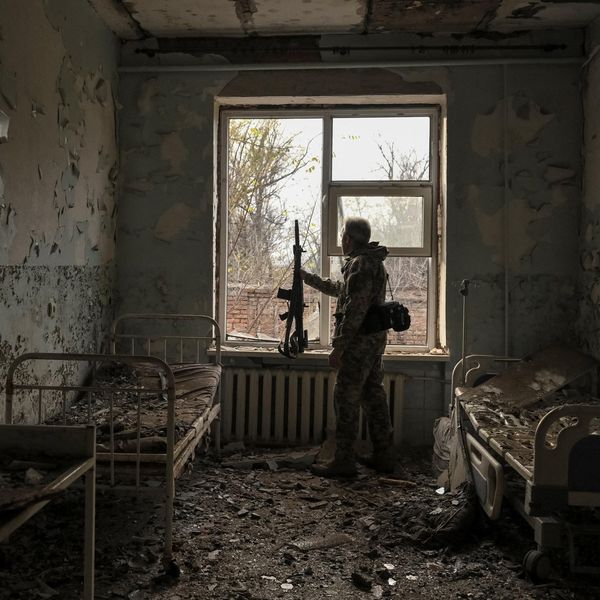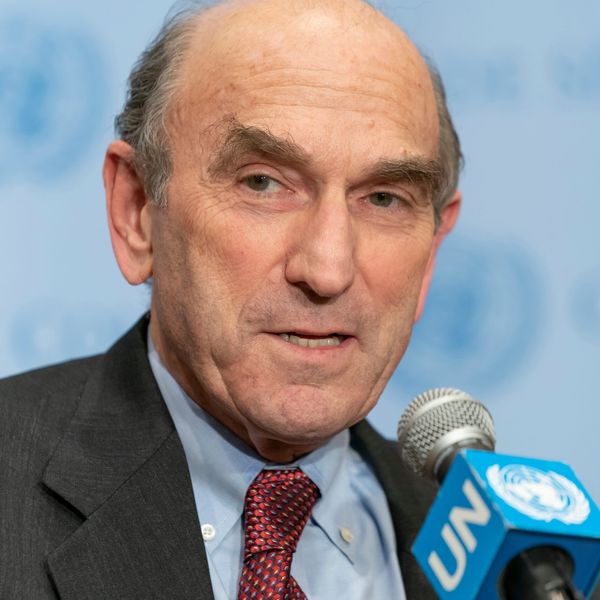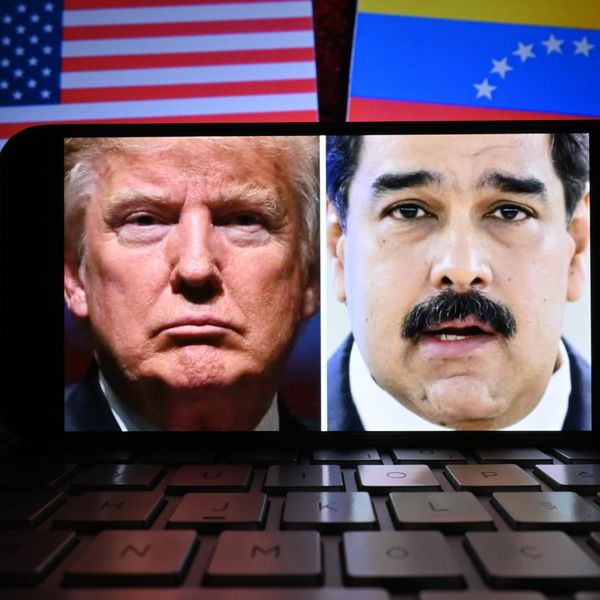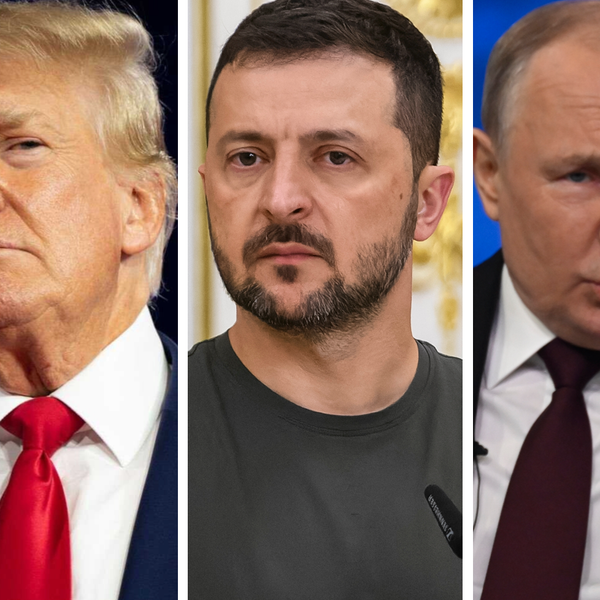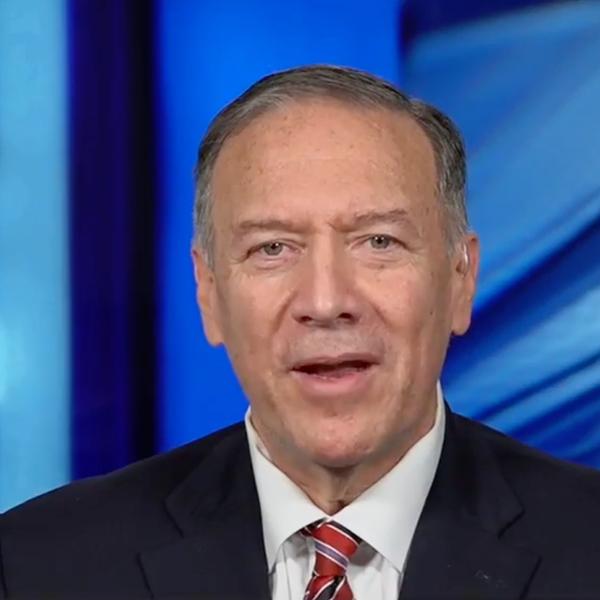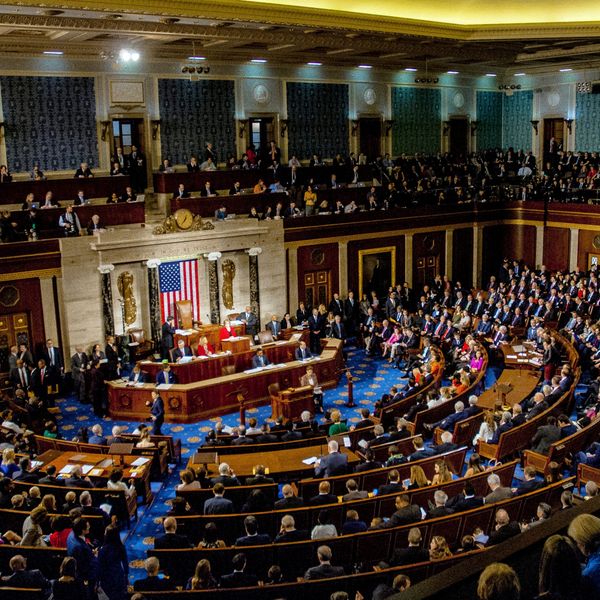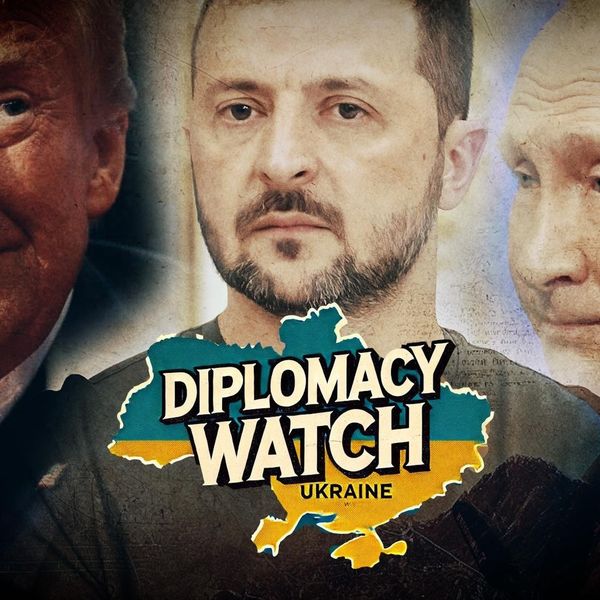Six years after former President Donald Trump’s withdrawal from the Iran nuclear deal, the disastrous consequences of this decision are still adding up.
In addition to Iran being closer than ever to a nuclear weapons capability, now we must consider how the declining security situation in the Middle East has raised the stakes significantly. Trump promised a “better deal” but instead we got an increasingly costly blunder that may be impossible to fix.
To fully understand the enormity of Trump’s decision to leave the Iran deal, consider this: When the U.S. and Iran were complying with the deal, it was estimated that it would take Iran about one year to produce enough fissile material (in this case, weapons grade uranium) for a nuclear bomb (known as the “breakout” time). The states negotiating with Iran (the United States, Russia, China, Great Britain, France, and Germany) assessed that this would be enough time to respond to possible violations and prevent Iran from producing a bomb. Even if Iran were to acquire sufficient fissile material, it could still take another year for Iran to make a deliverable nuclear weapon. As of May, 2018, the deal was working and considered (by most) to be a great success.
Then President Trump unilaterally left the deal, calling it a “horrible one-sided deal that should have never, ever been made.” And now we are in a much worse place. Iran says it has no intent to produce nuclear weapons and U.S. intelligence sees no current efforts by Tehran to weaponize, yet Tehran is believed to be not one year but just weeks from being able to produce enough fissile material for a bomb if it chooses to do so.
At the same time, the ability of international inspectors to detect violations in a timely manner has eroded. As one U.S. official said of Iran, “they are dancing right up to the edge.”
Worse still, relations between the United States and Iran have been so damaged by Trump’s withdrawal that it does not appear as though the deal can be resurrected. Any efforts to stabilize the U.S.-Iran relationship have been severely complicated by the recent exchange of direct attacks between Israel and Iran. Just as we need a non-military approach more than ever, the prospects for a diplomatic solution appear distant. What’s worse is that increasing tensions may be pushing Tehran closer to a political decision to go nuclear. The danger of an Iranian bomb and the related risk that Israel could attack Iran’s nuclear sites could lead to wider military conflict in the region. Of course, it did not have to be this way. The deal was working until Trump abandoned it and, if he had not, it could still be working today.How did we get here?
- Iran agreed to reduce its stockpile of low-enriched uranium by 98% to 300kg and limit uranium enrichment to 3.67%, suitable for civilian nuclear power but well below highly enriched (20%) or weapons grade (90%). Those limits would have lasted for 15 years.
- Tehran limited the number of uranium centrifuges in operation by two-thirds and committed not to build any new enrichment facilities for 15 years. The Fordow enrichment plant (designed as a secret, underground facility) was prohibited from enriching uranium, and limited enrichment could take place only at the Natanz facility.
- Iran agreed to redesign another nuclear facility to produce much less plutonium and its spent fuel would be shipped out of country.
- Iran agreed to provisionally implement additional safeguards under the auspices of the International Atomic Energy Agency (IAEA).
A year after President Trump’s withdrawal, Iran began to retaliate by incrementally breaching the terms of the deal. Tehran lifted the cap on its uranium stockpile, increased enrichment beyond the allowed 3.67% and resumed and expanded activity at prohibited nuclear facilities.
Many of Iran’s advances were taken in response to provocative actions from the U.S. and Israel. In early 2020, the Trump administration killed Iranian Major General Qassem Soleimani, leader of the Islamic Revolutionary Guard Corps, and soon after Tehran announced that it would no longer abide by its enrichment commitments under the deal. But, even so, Tehran said it would return to compliance if the other parties did so and met their commitments on sanctions relief.
In late 2020, Iranian nuclear scientist Mohsen Fakhrizadeh was assassinated near Tehran, reportedly by Israel. Soon after, Iran’s Guardian Council approved a law to speed up the nuclear program by enriching uranium to 20%, increasing the rate of production, installing new centrifuges, suspending implementation of expanded safeguards agreements, and reducing monitoring and verification cooperation with the IAEA. The Agency has been unable to adequately monitor Iran’s nuclear activities under the deal since early 2021.
Iran began enriching uranium to 20% in early 2021 at Fordow and then to 60% at Natanz a few months later after an act of sabotage damaged Natanz. Since then, Iran has been steadily increasing the rate of enriched uranium production. The latest IAEA report (February 2024) estimates Iran’s enriched uranium stockpile to stand at 5,525kg, more than 27 times the level permitted under the deal, with 833kg enriched to 20-60%.
How close to a bomb?
Iran is steadily advancing its nuclear program, getting ever closer to becoming a “threshold state” with the ability to make a weapon while making no overt move to build one.
The U.S. government estimated in March 2022 that Iran would need as little as one week to produce enough weapons-grade uranium for one nuclear weapon, according to a State Department official. During a March 2023 congressional hearing, then-Chairman of the Joint Chiefs of Staff Mark Milley testified that Iran could produce this amount of enriched uranium “in approximately 10-15 days.”
In its 2024 annual threat assessment, the U.S. Office of the Director of National Intelligence concluded that “Tehran has the infrastructure and experience to quickly produce weapons-grade uranium, if it chooses to do so.”
And in March 2024, France, Germany, and the UK estimated that Iran had acquired enough highly enriched uranium that, if enriched further to 90%, would theoretically be enough for three nuclear explosive devices.
There is greater uncertainty about how long it would take Iran to build a nuclear weapon once it has the required weapons-grade uranium. Such steps, referred to as “weaponization,” include producing uranium metal and shaping it into bomb parts, producing high explosives and electronics, and fitting it all into a device that could be used for a demonstration test. It would presumably take longer to produce a bomb that could be delivered by aircraft or a warhead small enough to fit onto a ballistic missile.
According to official U.S. assessments, Iran halted its nuclear weapons program in late 2003 and has not resumed it. Reportedly, this program’s goal, according to U.S. officials and the IAEA, was to develop an implosion-style nuclear weapon for Iran’s Shahab-3 ballistic missile. A State Department official stated in April 2022 that Iran would need approximately one year to complete the necessary weaponization steps.
We cannot put Humpty Dumpty back together again
Much of Iran’s uranium activities can be reversed; centrifuges can be disassembled, facilities can be closed, and uranium stocks can be blended down or shipped out of the country, as was done under the terms of the original deal. However, after years of operating more sophisticated centrifuges, Iran has acquired technical knowledge that cannot be undone.
But more importantly, we have lost the political opportunity to reach a comprehensive deal with Iran. The Iran nuclear deal would not have been possible without the active support of Russia and China. Yet these countries are no longer aligned with the West on these issues and Iran is actively supporting Russia in its war with Ukraine and selling oil to China. Iran does not need sanctions relief from the United States as much as it once did.
It was often said that although the Iran deal did not solve all the problems in the U.S.-Iran relationship, it solved an important one by taking an Iranian nuclear bomb out of the equation. That even if the myriad problems in the Middle East continued, at least we would not be facing those challenges and Iran on the nuclear threshold. And now that is exactly where we are.
The lessons of this tragic tale are clear: a meaningful nuclear agreement is much harder to create than to destroy; if we are lucky enough to get one it should be protected; and if we lose it, we should try to replace it.
The Iran deal was a truly remarkable achievement, and we would be much better off today if the United States had rejected the fantasy of a “better deal” and remained in compliance with the one we had. Trump’s decision (aided by then-Secretary of State Mike Pompeo and then-national security adviser John Bolton) to walk away was an historic and utter failure. Now, the prospects of finding a new diplomatic solution to the Iran nuclear crisis are daunting. But we must try; the alternatives are worse.
- Biden's Iran policy has been a total failure ›
- Reviving the Iran nuclear deal is the key to regional stability ›
- Is Biden taking the Iran nuclear deal off life support? ›
- Why the UN's nuke watchdog shouldn't censure Iran | Responsible Statecraft ›
- Trump now faces 'out of control' conflict in the Middle East | Responsible Statecraft ›
- Can Trump seal a deal with Iran? | Responsible Statecraft ›
- 'Max pressure' 2.0 on Iran could trigger a nuclear crisis | Responsible Statecraft ›
- Report: Incoming Trump officials mulling attack on Iran | Responsible Statecraft ›
- Trump stuns: Top Iranians 'do not want...a nuclear weapon' | Responsible Statecraft ›
- Can Russia avert a US slide toward war with Iran? | Responsible Statecraft ›
- How Iran quietly buttressed its pledge to not build nukes | Responsible Statecraft ›
- The war over war with Iran has just begun | Responsible Statecraft ›
- Can Trump wait for a deal with Iran? | Responsible Statecraft ›
- Why Trump can do what Biden couldn't on Iran | Responsible Statecraft ›
- Former Israeli official leading Israel, Iran desk at the White House | Responsible Statecraft ›
- MAGA influencers want an Iran deal and for hawks to shut up | Responsible Statecraft ›
- How the US could use Iran's uranium enrichment to its own advantage | Responsible Statecraft ›
- Can shared enrichment break the US-Iran nuclear deadlock? | Responsible Statecraft ›
- A nuclear deal with Iran could generate billions for US economy | Responsible Statecraft ›
- Four scenarios for war — and peace — with Iran | Responsible Statecraft ›


